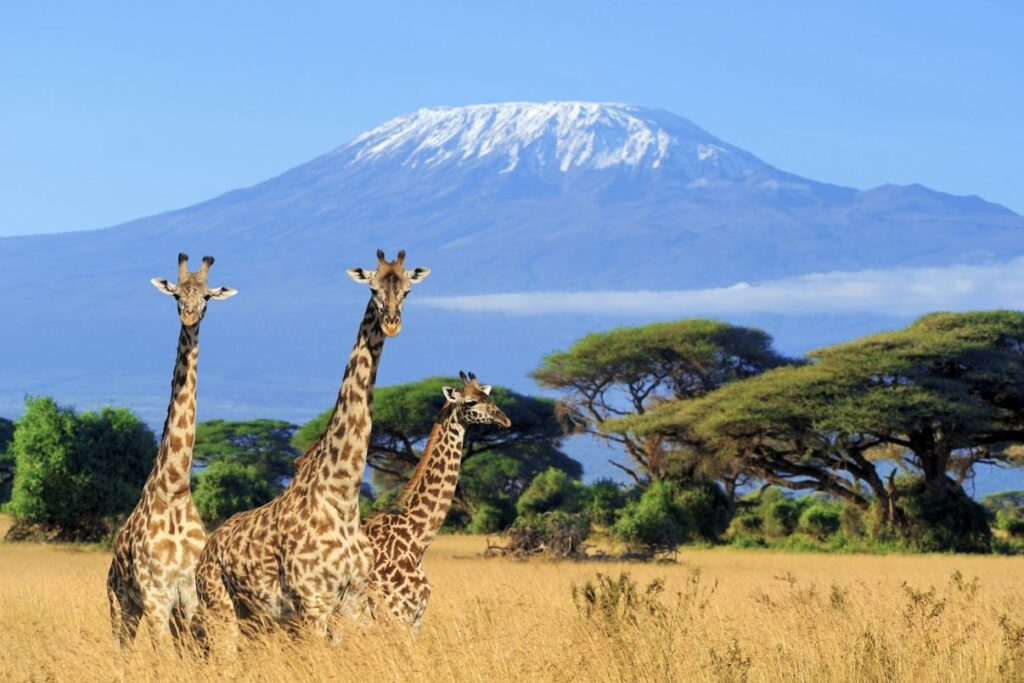Travel Guide
Kenya Entry Requirements For Americans: The Easy Guide
Whether you’re drawn by the world-class wildlife viewing, the stunning landscapes, or the chance to connect with its vibrant cultures, Kenya destination that offers truly unique experiences. Before you get swept up in planning your safari routes or beach time, there’s the essential step of understanding the entry requirements. Navigating official entry rules, often buried in dense government jargon, can be a chore. This guide simplifies things, specifically breaking down the current Kenya entry requirements for Americans into plain English. We’ll cover the essentials, from passport validity to travel authorizations, providing the clear, practical information you need to prepare confidently.


Your Passport: The Non-Negotiable
This is rule number one: your U.S. passport is essential, and it needs to meet two specific conditions set by Kenyan immigration:
- Six Months Validity: Your passport must be valid for at least six months beyond your planned date of arrival in Kenya. If your passport expires sooner, you need to renew it before you travel.
- Two Blank Pages: You need a minimum of two completely blank visa pages in your passport. These are for entry and exit stamps. Pages marked for amendments don’t count.
Check your passport’s expiration date and blank pages now. Don’t wait until the last minute! You can confirm this info on the US State Department travel page for Kenya.


Getting Your eTA (Electronic Travel Authorization)
Forget what you might have heard about visas – Kenya changed its system in January 2024. Now, all foreign visitors, including U.S. citizens (even infants), must obtain an Electronic Travel Authorization (eTA) before traveling to Kenya. You absolutely cannot get this upon arrival.
Here’s how it works:
- Apply Online: You have to apply through the one and only official Kenyan government website. Be wary of other sites claiming to process eTAs – use only the official one to avoid issues or scams.
- Timing is Key: Apply at least 3 days before you fly. However, applying 10 days to two weeks in advance is highly recommended to avoid any stress from potential processing delays. Standard processing usually takes about 3 business days.
- What You Need: Gather digital copies of your passport’s biographical page, a recent passport-style photo (a clear selfie against a plain background might suffice), your confirmed flight itinerary (arrival and departure), and proof of your accommodation booking(s).
- The Cost: Expect a government processing fee of around $34 USD for the standard tourist eTA, plus a small bank/service fee. Payment is made online via credit or debit card during the application.
- Approval & Use: Once approved, you’ll receive your eTA confirmation via email as a PDF document. Print it out and save a copy on your phone. You will need to show this approved eTA before you can board your flight to Kenya.
Think of the eTA as your digital permission slip to enter Kenya. No eTA, no boarding the plane! Apply on the official Kenya government website for your ETA.


How Long You Can Stay (and Visit)
Your standard Kenyan eTA allows you, as a US tourist, to stay in the country for up to 90 days. That’s plenty of time for most holidays, safaris, and explorations!
If you fall in love with Kenya and want to stay longer, it’s possible to apply for an extension for a further 90 days. You must do this before your initial 90 days run out by visiting an immigration office within Kenya.
For those planning multiple trips, US citizens have a unique option: a 5-year multiple-entry eTA. It allows numerous visits over five years (each stay capped at 90 days). It costs more and takes a bit longer to process, but it’s convenient for frequent visitors.


Flying In
Most US travelers arrive at Jomo Kenyatta International Airport (NBO) in Nairobi. Once you land, you’ll proceed to immigration control. Have your valid passport and your approved eTA (either printed or ready on your phone) handy to show the immigration officer. They will verify your documents and officially stamp you into the country.
Onward/Return Ticket: US citizens should have proof of an onward or return ticket, as it’s commonly required for the eTA process and can be checked upon entry into Kenya.
Proof of Funds: Although not always requested from US tourists, be prepared to show proof of sufficient funds upon arrival in Kenya, as immigration officers have the authority to ask for it.


Money Talk: Kenyan Shillings and Your Dollars (Beer Example!)
Kenya’s official currency is the Kenyan Shilling (KES). While you might occasionally see prices quoted in USD at very touristy lodges, you’ll need Shillings for almost everything else.
Understanding the exchange rate helps you know how much things cost. The rate is roughly 1 US Dollar = 129 Kenyan Shillings (1 USD ≈ 129 KES). This rate changes daily, so check a reliable online source like Google Finance just before your trip for the latest figures.
What does this mean in simple terms? Let’s use a popular local beer, like Tusker, as an example. If you see a Tusker priced at, say, 300 KES in a restaurant or lodge bar, that is about $2.33 USD.
You can exchange USD for KES at the airport, banks, or official Forex bureaus (compare rates!). ATMs are also common in cities and towns for withdrawing shillings directly using your US debit card (check your bank’s fees first).


Staying Safe: Tips and Official Advice
Kenya is generally welcoming, but like any destination, it pays to be aware and take precautions. The U.S. Department of State provides travel advisories – currently, Kenya is at Level 2: Exercise Increased Caution overall, citing risks like crime and terrorism. Some specific border areas and urban neighborhoods have higher advisory levels (Level 3 or 4).
Key concerns include street crime (like muggings or “snatch and grab” thefts, especially from motorcycles) in cities, and the potential for terrorist incidents. Emergency services can be limited outside major urban centers.
Stay safe with these simple tips:
- Be Aware: Pay attention to your surroundings, especially in crowded areas. Avoid flashing cash or expensive gadgets.
- Avoid Night Risks: Don’t walk alone at night, especially in cities. Limit driving outside main towns after dark.
- Secure Your Stuff: Use hotel safes for your passport, extra cash, and valuables. Carry copies of important documents separately.
- Register Your Trip: Enroll in the free Smart Traveler Enrollment Program (STEP). This helps the US Embassy contact you in an emergency and sends you safety updates.
Always check the current official US State Department Kenya Travel Advisory before you depart.


Why Travel Insurance is a Really Good Idea
Getting comprehensive travel insurance isn’t just recommended; it’s practically essential for Kenya. Here’s why:
- Medical Emergencies: Healthcare facilities, particularly outside Nairobi, may be basic. Serious illness or injury could require medical evacuation, which costs a fortune without insurance. Most policies cover emergency treatment and evacuation.
- Upfront Payment: Hospitals often require payment before providing treatment. Insurance can help manage these costs.
- Other Issues: Good policies also cover trip cancellation/interruption, lost or delayed baggage, and theft.
Bottom line: Don’t skip travel insurance. Get quotes from reputable providers and choose a policy that covers medical emergencies, evacuation, and your planned activities.


Other Quick Tips for Your Trip
- Health: Visit a travel clinic or your doctor 4-6 weeks before departure to discuss recommended vaccinations (like Hepatitis A, Typhoid) and malaria prevention. Check the CDC Travelers’ Health page for Kenya. Proof of Yellow Fever vaccination is needed only if arriving from a country with risk of transmission.
- Power: Kenya uses the Type G plug (the UK-style 3 rectangular pin plug) and 240V electricity. You’ll need a plug adapter for your US devices. Check if your electronics are dual voltage (most laptops/phones are); if not, you’ll need a voltage converter too.
- Plastic Bags: Remember Kenya’s strict ban on single-use plastic bags. Don’t bring them into the country. Use reusable bags.
- Language: English is an official language and widely spoken, especially in tourism. Learning basic Swahili greetings like Jambo (Hello) or Asante (Thank you) is always appreciated.
- Packing: Think layers. Light clothes for daytime heat, a fleece or jacket for cool evenings/early mornings. Neutral colors (khaki, beige, green) are ideal for safari. Bring comfortable walking shoes!


You’re Almost Ready!
That covers the main Kenya entry requirements for Americans and some key travel tips. The most critical steps are ensuring your passport meets the validity and page requirements, and securing your eTA online well before you travel.
Now that you’ve hopefully got a clear picture of the entry requirements, you can pour your energy into planning all the unforgettable moments your Kenyan trip holds. Have a fantastic, safe, and truly enriching journey!
Ready For Your Trip? Check The Latest Entry Requirements For Your Destination Here
↓ Elevate Your Travel↓
Sign Up Now For Travel Off Path Premium! No ads, VIP Content, Personal Travel Concierge, Huge Savings, Daily Deals, Members Forum & More!


✈️Join Our Travel Off Path Community Forum: Where travelers unite, ask questions, share experiences and even find like-minded travel buddies!
SUBSCRIBE TO OUR LATEST POSTS
Enter your email address to subscribe to Travel Off Path’s latest breaking travel news, straight to your inbox.
This article originally appeared on TravelOffPath.com
Opinions expressed here are the author’s alone, not those of any bank, credit card issuer, hotel, airline, or other entity. This content has not been reviewed, approved or otherwise endorsed by any of the entities included within the post.

